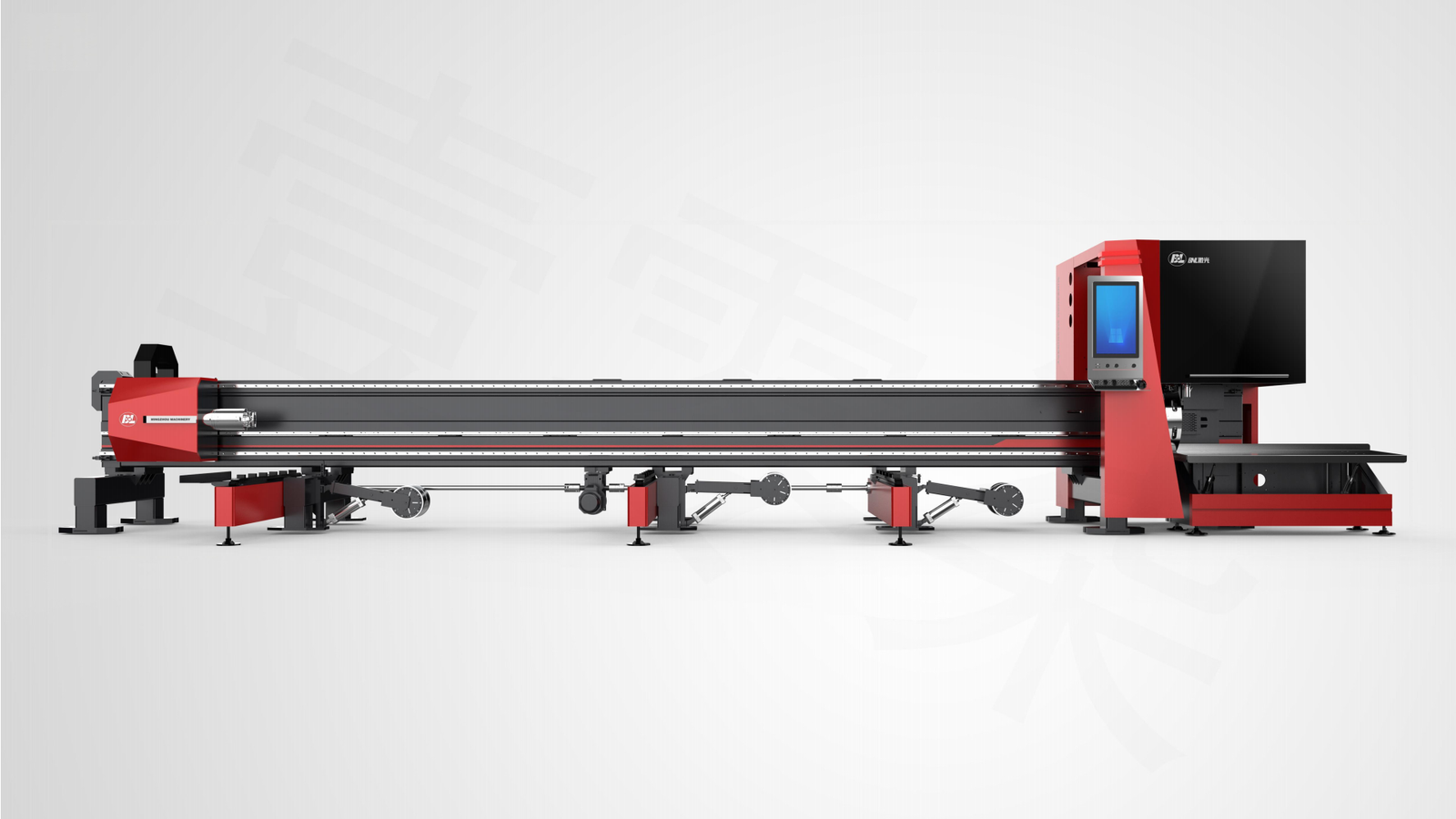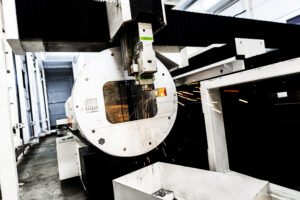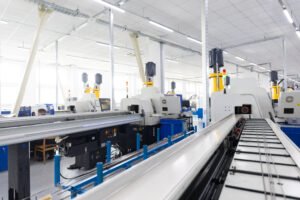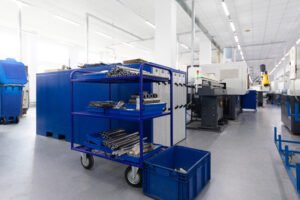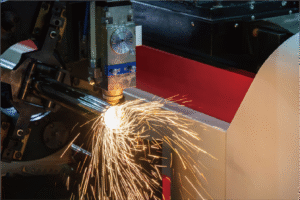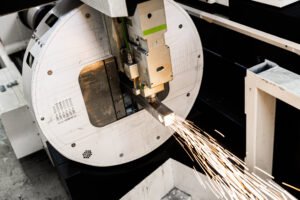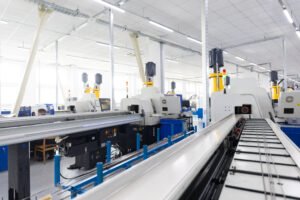Can One Metal Tube Cutting Machine Handle Multiple Pipe Shapes?
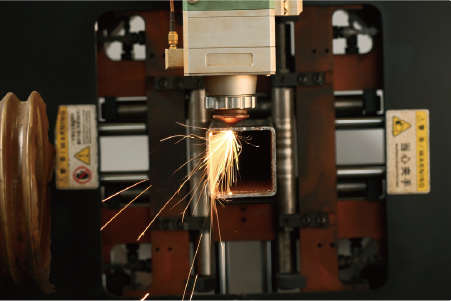
Are you struggling to cut diverse pipe shapes efficiently with your current machinery? The constant retooling and complex programming for different tube types can severely limit productivity and increase operational costs. Imagine a single machine effortlessly adapting to your varied production needs.
Modern metal tube cutting machines, particularly those with advanced software, adaptive chucking systems, and multi-axis capabilities, can indeed handle a wide array of pipe shapes, including round, square, rectangular, and even irregular profiles. This versatility significantly enhances production flexibility.
In the dynamic world of metal fabrication, versatility is no longer a luxury but a necessity. As a manufacturer myself, I understand the pressing need for equipment that can adapt to evolving production demands without compromising efficiency or precision. It's about empowering your operations, not limiting them.
The ambition to process multiple pipe shapes on a single machine often collides with the technical realities of traditional manufacturing. While seemingly straightforward, adapting machinery for diverse geometries presents a complex challenge, impacting everything from programming complexity to material handling and finished product quality. We’ve seen countless fabrication businesses, much like Ahmed Al-Farsi’s in the UAE, grapple with the inefficiency of maintaining separate machines or enduring lengthy setup times for each unique pipe profile. The critical thinking here extends beyond mere technical capability; it encompasses the economic implications of downtime, operator skill requirements, and the long-term return on investment. Industry reports consistently highlight that agility in production1, driven by versatile machinery, is a key differentiator for competitiveness. How then, do we bridge this gap between aspiration and practical application, ensuring that a single machine can truly deliver on the promise of universal pipe cutting?
What challenges arise when cutting multiple pipe shapes using a single machine?
Are you facing production bottlenecks when your machine can't seamlessly switch between different pipe shapes? The complexities of handling varied geometries, from programming to physical setup, often lead to significant downtime. This lack of versatility can severely hinder your operational efficiency.
Cutting multiple pipe shapes on a single machine presents challenges like complex programming, frequent retooling, material handling difficulties, maintaining precision across varied profiles, and managing the high skill requirements for operators to achieve consistent quality and efficiency.
From my own experience working with hundreds of metal fabricators, including clients like Ahmed, I’ve witnessed firsthand the frustrations stemming from machines ill-equipped for diverse tasks. The dream of a one-stop solution often hits a wall of practical limitations, transforming what should be a smooth workflow into a series of frustrating stoppages and costly errors. This isn't just about technical hurdles; it impacts your bottom line, your project timelines, and even your team's morale. We need to dissect these challenges to truly appreciate the value of innovative solutions that address them head-on, ensuring your investment truly pays off.
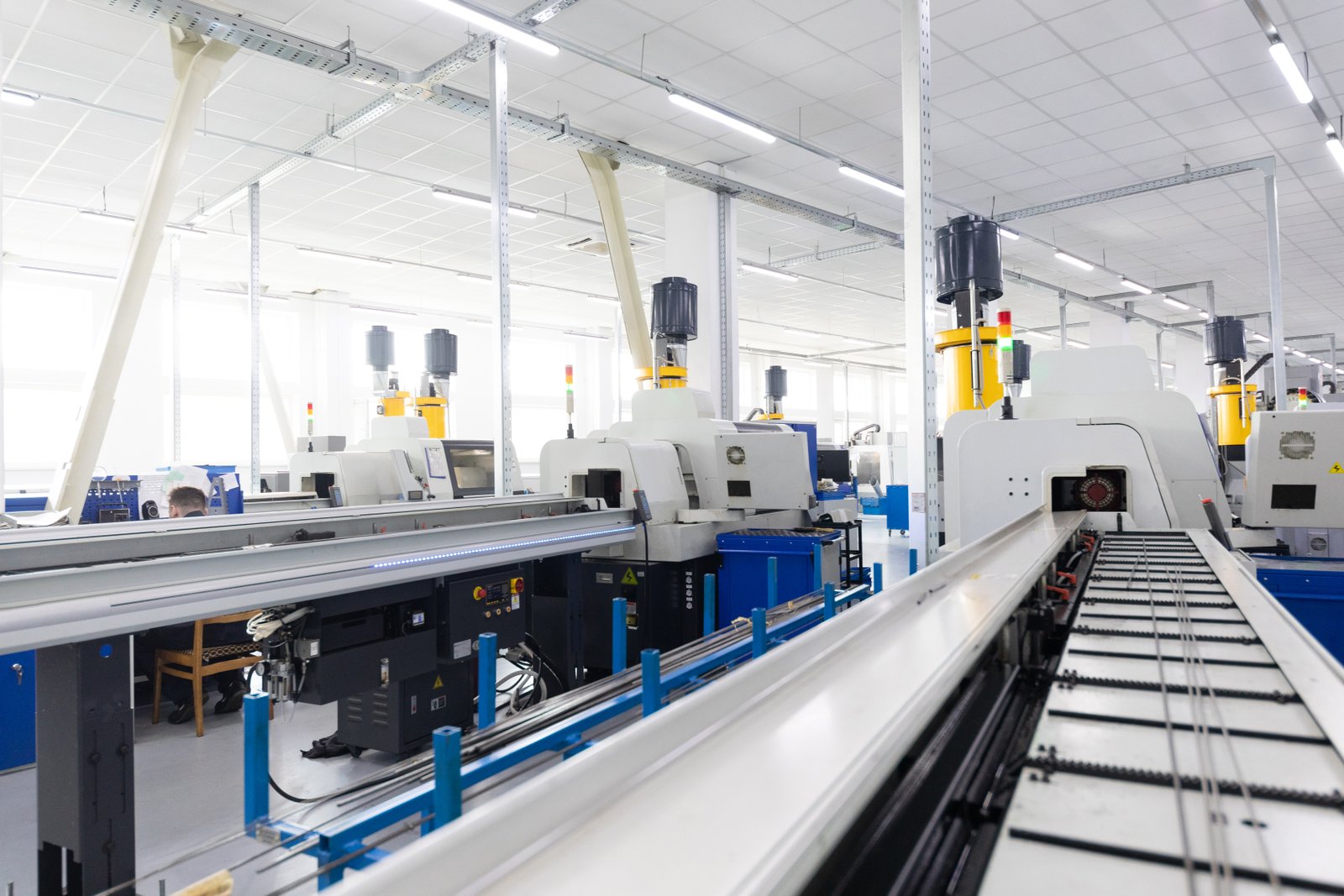
The Complexity of Programming and Setup
Processing different pipe shapes—be it round, square, rectangular, or more intricate custom profiles—on a single machine traditionally requires a significant investment in programming time and operator expertise. Each new shape demands specific cutting paths, compensation for material thickness and type, and often, intricate fixture adjustments. Consider Ahmed Al-Farsi's previous setup: his team frequently faced the burden of needing skilled CAD operators to create or modify complex 3D drawings for every new project involving a different pipe shape. This wasn't merely an inconvenience; it translated into substantial non-productive hours, increasing lead times and delaying project deliveries. Data from a 2022 manufacturing survey indicated that programming and setup accounts for up to 30% of total job time in multi-shape cutting operations using conventional machines, highlighting a massive inefficiency.
Furthermore, the process of manually adjusting machine parameters for each shape, from clamping pressure to cutting speed and power, introduces a high risk of human error. Even slight miscalculations can lead to material waste, rework, or even damage to the machine. This iterative process of trial and error is both time-consuming and expensive, especially when dealing with high-value materials. For businesses like MZBNL’s clients who operate on contract-based fabrication services, minimizing waste and maximizing throughput are paramount to profitability. The traditional reliance on highly specialized operators also exacerbates the "high operator turnover caused retraining burdens" pain point Ahmed experienced, as finding and retaining such expertise becomes increasingly challenging in a competitive labor market.
The challenge is magnified when considering multi-process integration, such as combining cutting with punching on the same machine. Each process adds another layer of programming complexity, requiring precise synchronization across different axes and tools for each unique pipe shape. Without an intelligent, adaptable system, operators must juggle multiple software interfaces and manual adjustments, leading to further delays and increased potential for errors. This complex interplay of variables underscores why traditional machines often struggle to be truly versatile, pushing businesses towards specialized equipment for each pipe shape, which is a costly and space-intensive solution.
Material Handling and Mechanical Limitations
Beyond programming, the physical handling and securing of diverse pipe shapes present significant mechanical challenges for a single machine. Traditional clamping systems are often designed for specific geometries, primarily round tubes. Adapting these systems to securely hold square, rectangular, or oval pipes without deformation or slippage during high-speed cutting requires either cumbersome manual adjustments, dedicated fixtures for each shape, or specialized chucks that lack the necessary versatility. For a metal fabrication business dealing with varied projects, this means constant interruptions for retooling.
The feeding mechanism itself can also become a bottleneck. Machines relying on side or rear manual loading, common in older designs, are inherently less efficient when switching between different pipe lengths and shapes. Each change demands precise alignment and careful feeding to prevent material damage or inaccurate cuts. This labor-intensive process not only reduces efficiency but also increases operator fatigue and the risk of workplace injuries. As MZBNL recognized, "While traditional machines rely on side or rear manual loading," this approach is simply not scalable for modern production demands that necessitate rapid transitions between various pipe types.
Moreover, the structural rigidity and axis kinematics of some machines may not be optimized for the stresses and movements involved in cutting non-circular profiles. When a machine is designed primarily for round tubes, applying it to square or rectangular profiles can lead to increased vibration, reduced cutting precision, or premature wear on components if the machine lacks the necessary dynamic stability. This often results in a trade-off: either the machine performs sub-optimally across different shapes, or specialized, less versatile machines are purchased for each specific need, escalating capital expenditure. The challenge, therefore, is not just about cutting, but about consistent, high-precision cutting across a spectrum of shapes without compromising machine longevity or output quality.
| Mücadele Alanı | Traditional Machine Limitations | Impact on Production |
|---|---|---|
| Programming Complexity | Requires skilled CAD operators, manual data input for each shape. | High downtime, increased lead times, reliance on scarce talent. |
| Retooling/Setup Time | Manual fixture changes, slow adjustments for different geometries. | Reduced throughput, significant non-productive hours. |
| Malzeme Taşıma | Inefficient manual loading, non-adaptive clamping systems. | Operator fatigue, material deformation, feeding errors. |
| Precision & Quality | Difficulty maintaining tolerance across varied profiles, vibrations. | Increased scrap rates, rework, inconsistent product quality. |
| Operator Skill Barrier | Extensive training needed for diverse operations and troubleshooting. | High training costs, difficulty with staff turnover, higher wages. |
The Skill Gap and Training Burden
One of the most profound challenges arising from multi-shape cutting on traditional machines is the significant skill gap it creates among operators and the subsequent training burden on businesses. Operating complex machinery that requires constant manual adjustments and intricate programming for various pipe shapes demands a high level of technical proficiency, often acquired through extensive, time-consuming training. Ahmed Al-Farsi’s experience underscores this pain point: "Previous machines required skilled CAD operators" and "high operator turnover caused retraining burdens." This isn't just an anecdotal issue; a recent report from the National Association of Manufacturers highlighted that 60% of companies struggle to find workers with the necessary skills for advanced manufacturing roles.
This reliance on highly skilled personnel translates directly into higher labor costs and increased vulnerability to staff turnover. When an experienced operator leaves, the knowledge gap can severely disrupt production as new hires must undergo lengthy training periods, often weeks or even months, before they can effectively operate the machine across all required pipe shapes. This leads to a vicious cycle of decreased productivity and continuous investment in training, diverting resources that could otherwise be used for innovation or expansion. It also limits a company's ability to scale quickly, as expanding production means finding and training more such specialized individuals.
Moreover, the demanding nature of constantly reconfiguring machines for different shapes can lead to operator fatigue and potential errors, especially under tight deadlines. This human element becomes a critical variable in maintaining consistent quality and efficiency across diverse production runs. Ultimately, the skill gap and training burden associated with traditional multi-shape cutting machines don't just affect immediate output; they impact the long-term sustainability and growth potential of a manufacturing business, pushing the industry towards solutions that prioritize ease of use and automated adaptability.
Modern machines cut multiple pipe shapesDoğru
Advanced tube cutting machines with multi-axis capabilities can handle round, square, rectangular and irregular profiles through adaptive systems.
Programming different shapes is simpleYanlış
Each new pipe shape requires complex programming of cutting paths and material compensations, accounting for 30% of job time in traditional setups.
Why do some machines struggle with cutting different pipe shapes effectively?
Ever wonder why some cutting machines fall short when tackling various pipe shapes? It's often due to fundamental design limitations that prevent seamless adaptation. These struggles directly impact efficiency and the versatility your business needs.
Many machines struggle with diverse pipe shapes due to fixed clamping mechanisms, rigid software that lacks adaptive programming, and mechanical designs optimized for a single geometry. These limitations lead to inefficiencies, reduced precision, and increased manual intervention for different profiles.
As a machine manufacturer, I’ve seen the industry evolve, and with it, the expectations for versatility. The underlying reasons for a machine’s struggle with multi-shape cutting are often rooted in its core architecture – the very elements that define its capabilities. It's not simply a matter of adding a feature; it's about a holistic design philosophy. Understanding these limitations is the first step towards appreciating the revolutionary advancements that have made truly versatile machines a reality, transforming the landscape for businesses like MZBNL’s global clientele. Let’s look at the technical culprits that hold many systems back.
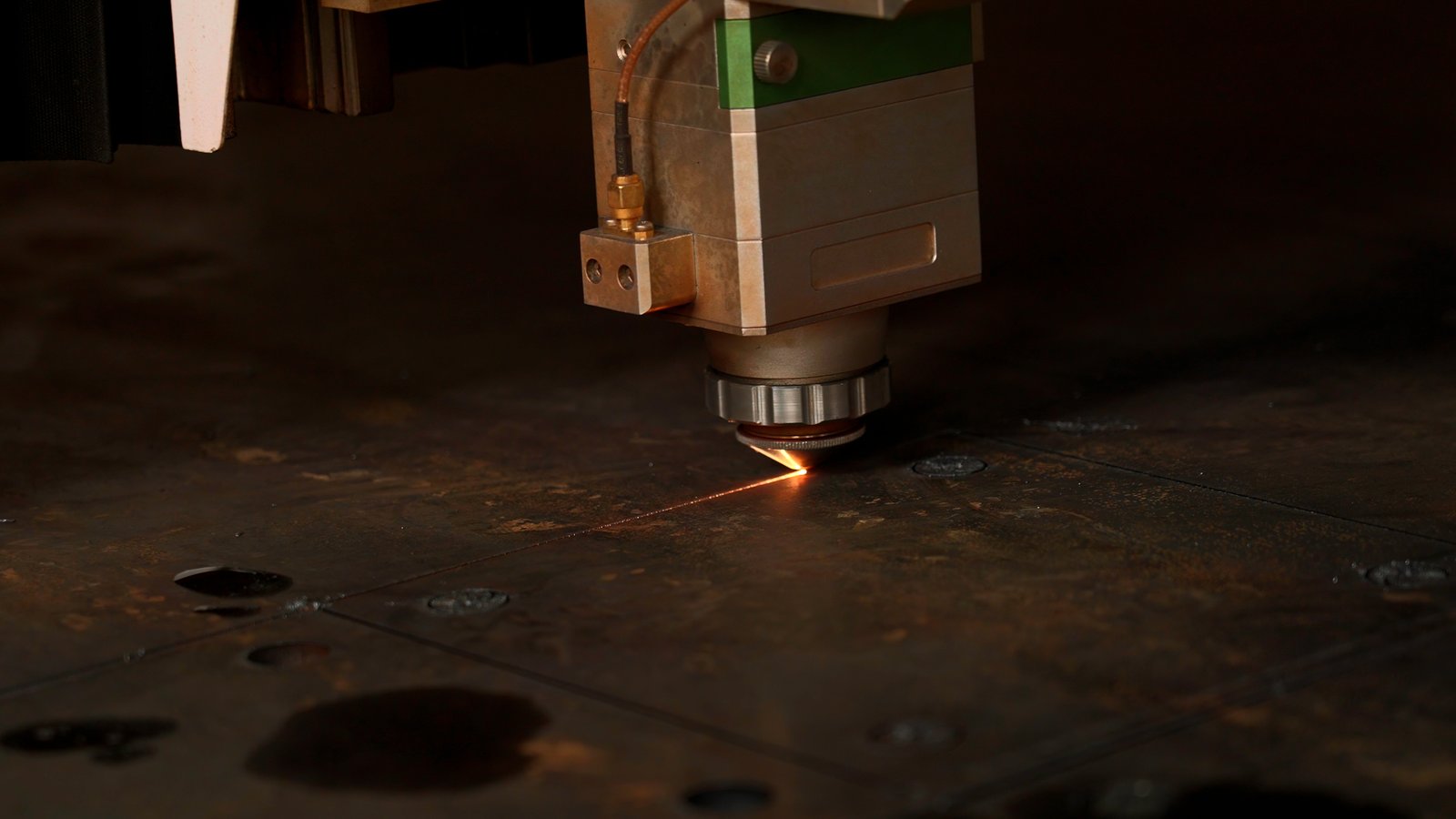
Design and Software Rigidity
One of the primary reasons many metal tube cutting machines struggle with diverse pipe shapes lies in their inherent design and software rigidity. Traditional machines are often engineered with a specific type of tube in mind, typically round, which optimizes their mechanical components like chucks, guides, and cutting heads for that singular geometry. When attempting to process square, rectangular, or oval tubes, these fixed designs prove inadequate, leading to issues such as improper clamping, misalignment, or uneven cutting. The chucks, designed for perfect circular gripping, can deform non-circular tubes or fail to provide sufficient stability, resulting in inaccurate cuts or even material slippage during high-speed operations.
Complementing this mechanical rigidity is the software's inflexibility. Older control systems require distinct programming for each new pipe shape and cut pattern. This means operators, as Ahmed Al-Farsi experienced, "required skilled CAD operators" to manually create or adapt complex 3D drawings for every variation. Such software lacks the intuitive, adaptive intelligence to automatically adjust parameters based on simple input of tube dimensions and desired hole patterns. This leads to an extremely time-consuming setup process, as highlighted by a 2021 industry analysis noting that non-adaptive software can increase programming time by up to 50% when switching between complex shapes.
Moreover, the lack of integrated multi-axis control in many traditional machines restricts their ability to perform complex cuts on irregular shapes. While a simple straight cut on a square tube might be manageable, intricate contours, bevels, or integrated punching operations demand advanced software that can choreograph the movement of multiple axes simultaneously and with high precision. Without this level of sophistication, operators are forced to perform secondary operations or compromise on design, severely limiting the machine's overall utility and throughput for diverse projects.
Limitations in Clamping and Feeding Mechanisms
The effectiveness of a metal tube cutting machine in handling multiple pipe shapes is heavily dependent on its clamping and feeding mechanisms. Many conventional machines utilize chucks or vises that are primarily designed for specific pipe diameters and shapes, making them unsuitable or inefficient for a broad range of geometries. For instance, a four-jaw chuck optimized for round tubes might struggle to provide stable, non-deforming grip on a thin-walled rectangular tube, leading to vibrations, slippage, or crushing. This necessitates frequent manual adjustments, changing of jaws, or even custom jigs for each new pipe shape, which translates directly into significant downtime and increased labor intensity.
Furthermore, traditional feeding systems often rely on manual loading or less sophisticated automated processes that lack the adaptive intelligence to handle varied pipe dimensions and shapes smoothly. As MZBNL pioneered, "While traditional machines rely on side or rear manual loading," this approach is inherently less efficient and more prone to errors when dealing with a constantly changing mix of tube types. A tube that is too heavy or too long for a manual system, or one that is not properly supported by a fixed-design feeder, can lead to misalignment, material damage, or even safety hazards. This absence of a "Önden Beslemeli İnovasyon2" means that efficiency is sacrificed for every switch in pipe type.
The lack of intelligent feedback systems in these older mechanisms also contributes to their struggles. Without sensors that can detect the precise position, shape, and potential deformation of the tube in real-time, the machine cannot automatically compensate or adjust its clamping force or feeding speed. This absence of closed-loop control means that operators must constantly monitor and intervene, which is unsustainable for high-volume, multi-shape production. The inability to automatically load, accurately clamp, and seamlessly feed a diverse array of pipe shapes without extensive human intervention is a fundamental flaw that limits the true versatility and productivity of many conventional machines.
Absence of Adaptive Technologies
A critical factor hindering many machines from effectively cutting diverse pipe shapes is the absence of modern adaptive technologies. Older systems typically lack the advanced sensors, real-time feedback loops, and intelligent control algorithms necessary to automatically adjust to varying material properties, wall thicknesses, or unexpected irregularities in non-standard pipe shapes. Without this adaptability, operators must manually input compensation values or perform test cuts, significantly extending setup times and increasing material waste. This stands in stark contrast to MZBNL's "smart and digitalized systems," which are designed for seamless adaptation.
Moreover, the lack of an integrated "No-CAD Operating System Innovation" is a major stumbling block. Traditional machines compel operators to return to the design office for complex 3D drawings even for minor modifications or new standard tube types. This inefficient workflow fundamentally prevents rapid adaptation to new pipe shape requirements, creating a bottleneck that directly impacts production agility. The ability to simply enter parameters for standard tube types and hole patterns, as BNL’s system allows, is a game-changer for versatility, drastically reducing the skill threshold and setup time.
Finally, the struggle of many machines is exacerbated by their inability to maximize material utilization across different shapes, particularly for the often-unusable tail material. Conventional systems, which start cutting from the tube head, inevitably leave an unusable remnant. The absence of a "Zero-Waste Tail Material Innovation," where cutting logic calculates from the rear chuck, means that material is wasted regardless of the pipe shape. This inefficiency compounds over time, particularly when dealing with expensive specialty alloys or custom profiles. The integration of such adaptive, waste-reducing technologies is what truly differentiates a versatile, high-performance machine from one that struggles to meet the demands of modern multi-shape metal fabrication.
Fixed clamping limits shape versatilityDoğru
Traditional machines use chucks designed for specific shapes, causing instability when cutting non-standard profiles.
CAD is always required for adjustmentsYanlış
Modern systems like MZBNL's allow parameter entry without CAD for standard tube modifications.
How do machine design innovations enable the handling of diverse pipe shapes?
Are you curious how cutting-edge machine design transcends traditional limitations to handle any pipe shape? Breakthrough innovations are revolutionizing versatility, allowing single machines to seamlessly adapt to diverse geometries. This is how true flexibility is engineered.
Machine design innovations, including advanced No-CAD operating systems, highly adaptive multi-jaw chucking mechanisms, and integrated intelligent software with real-time feedback, collectively enable metal tube cutting machines to efficiently process a wide array of pipe shapes with high precision and minimal setup.
As someone deeply involved in the evolution of metal fabrication technology, I can confidently say that the advancements in machine design are nothing short of revolutionary. We at MZBNL have invested significantly in R&D, witnessing firsthand how targeted innovations can transform a machine's capabilities from rigid specialization to fluid versatility. These are not merely incremental improvements; they are fundamental shifts in how machines interact with materials, enabling a single system to accomplish what once required multiple dedicated pieces of equipment. Let's delve into the specific design innovations that are empowering fabricators worldwide, including visionary clients like Ahmed Al-Farsi, to embrace complex projects with unprecedented ease.
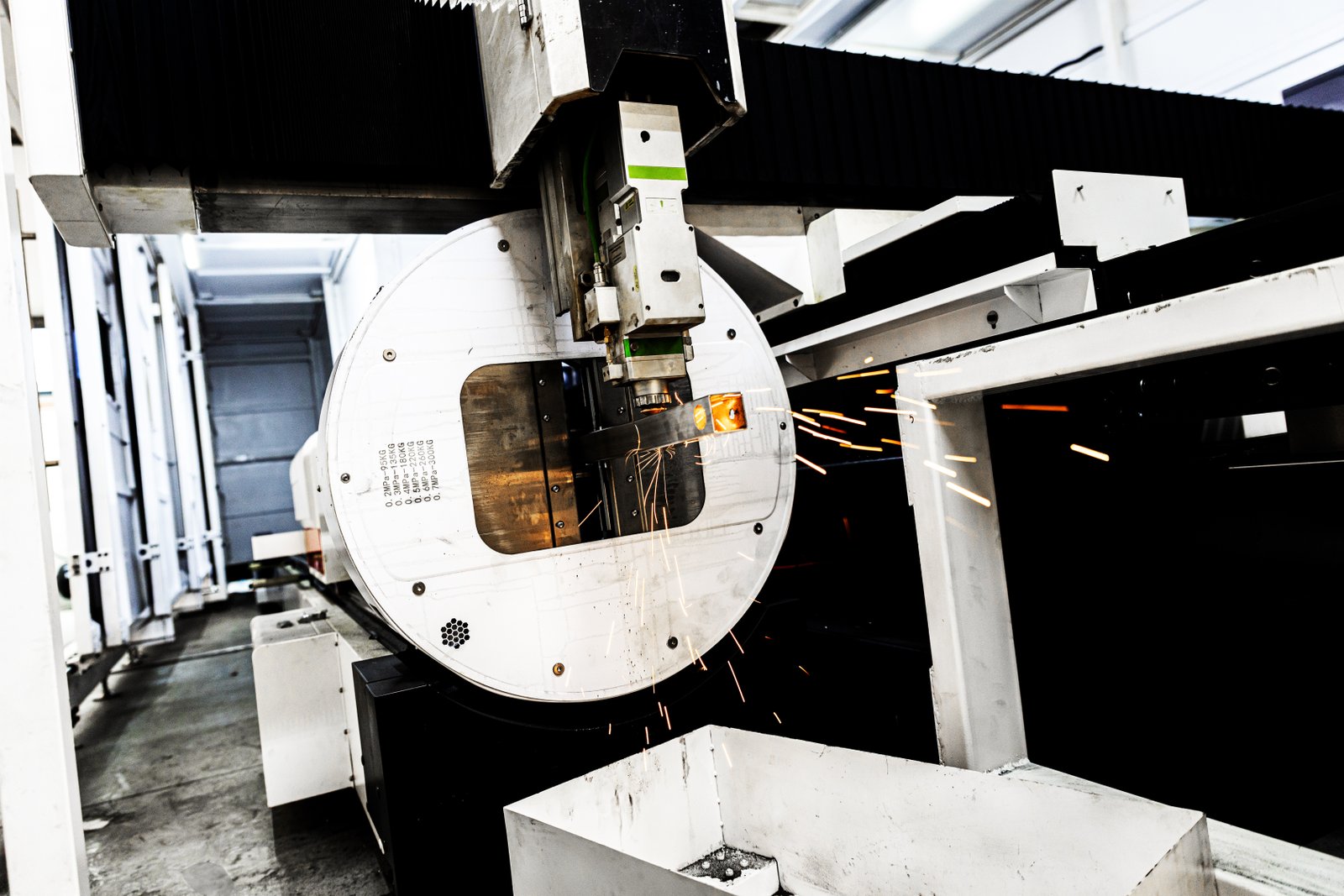
No-CAD Operating System and Parameter-Based Processing
One of the most transformative design innovations enabling the handling of diverse pipe shapes is the development of intelligent, parameter-based operating systems, epitomized by MZBNL's pioneering No-CAD System. Traditionally, processing complex or even standard pipe shapes required intricate 3D CAD drawings. This meant that for every new design or variation in tube shape—whether switching from a round to a square profile, or even just altering hole patterns—operators had to return to a design office, create or modify drawings, and then import them into the machine's control system. This process was incredibly inefficient and time-consuming, acting as a major bottleneck for businesses aiming for high throughput and rapid prototyping.
The No-CAD System, however, completely bypasses this cumbersome process. Instead of relying on complex drawings, it allows operators to process standard tube types and hole patterns simply by entering specific parameters directly into the machine's interface. For instance, an operator can select a "square tube" profile, input its side length and wall thickness, then specify the desired hole diameter, position, and quantity. The system's intelligent algorithms then automatically generate the optimal cutting path and machine parameters in real-time. This innovation dramatically improves ease of use, making the machine accessible to a wider range of operators and significantly lowering the skill threshold required. Ahmed Al-Farsi, who previously grappled with the need for "skilled CAD operators" and "high operator turnover caused retraining burdens," would find this particularly appealing, as it reduces the need for extensive 15-day factory training to just a single day of on-site instruction.
This parameter-based approach is crucial for multi-shape versatility because it abstracts the complexity of geometry into simple, user-friendly inputs. It means that transitioning between different pipe shapes—from a round tube to a rectangular one, or even a specialized oval—becomes a matter of data entry rather than intricate design work. This not only shortens setup time but also virtually eliminates human error associated with manual drawing and programming. Such systems incorporate pre-programmed libraries of common shapes and patterns, further accelerating the process. The impact is profound: increased operational agility, reduced labor costs, and the ability to quickly adapt to diverse production demands, making it feasible for a single machine to handle an unprecedented variety of pipe profiles with high precision.
Advanced Adaptive Chucking and Feeding Systems
Beyond intelligent software, the mechanical heart of a versatile tube cutting machine lies in its advanced adaptive chucking and feeding systems. Traditional machines often rely on fixed or manually adjustable chucks that are optimized for a specific pipe shape, typically round. When attempting to secure square, rectangular, or irregular profiles, these chucks either deform the material, provide unstable grip, or require time-consuming manual adjustments and the use of specialized, shape-specific jigs. This significantly impedes efficiency and precision when switching between different pipe geometries.
Modern innovative designs, however, incorporate multi-jaw adaptive chucks that can automatically adjust their gripping force and position to conform to a wide array of pipe shapes. These chucks often feature intelligent sensing capabilities that detect the incoming tube's profile and communicate with the machine's control system to ensure optimal, non-deforming clamping. This not only provides superior stability during high-speed cutting but also minimizes setup time, as operators no longer need to manually reconfigure the chucks for each different shape. This level of automation is critical for businesses like Ahmed's, who prioritize "turnkey solutions that are easy to install and operate" and seek to "automate existing manual workflows."
Furthermore, innovative feeding mechanisms, such as MZBNL's optimized Front-Feeding Innovation3, revolutionize material handling for diverse pipe shapes. While conventional systems often employ less efficient side or rear loading that requires significant manual effort and precise alignment for each new tube type, front-feeding automatically pulls the tube in from the front. This design dramatically enhances efficiency, increasing feeding efficiency by about 40% and reducing operator labor intensity by approximately 40%. This is particularly vital when processing a mix of different pipe shapes and lengths, as it ensures continuous and precise material flow without bottlenecks. The combination of intelligent chucking and automated, adaptive feeding systems means that a single machine can seamlessly transition between different pipe geometries, from loading to clamping to cutting, with unparalleled speed and accuracy.
Integrated Smart Control and Zero-Waste Logic
The ultimate enabler for handling diverse pipe shapes on a single machine is the integration of smart control systems that incorporate real-time feedback, predictive analytics, and advanced cutting logic, including innovations like MZBNL's Zero-Waste Tail Material. These systems go beyond simply executing pre-programmed paths; they intelligently adapt to the material and the cutting process in real-time, ensuring optimal performance across various geometries and minimizing waste. Traditional laser cutting systems, regardless of pipe shape, typically start from the tube head and often generate unusable tail material at the end of the process, especially when cutting multiple short parts from a long tube. This results in significant material loss, impacting profitability.
MZBNL’s Zero-Waste Tail Material Innovation fundamentally redesigns the cutting logic by calculating from the rear chuck as the origin. This allows the system to eliminate leftover tail material as long as the remaining section is smaller than the product length, maximizing material utilization for any pipe shape, whether it's round, square, or rectangular. This intelligent optimization is crucial for cost-effectiveness, particularly for businesses that value a "high cost-performance ratio" and seek to reduce operational expenses. A simple pipe cutting operation can see material utilization rates jump from a conventional 85-90% to nearly 99% with such a system, leading to substantial savings over time.
Moreover, modern smart control systems incorporate features like automatic nesting for different pipe shapes, dynamic power adjustments based on real-time material feedback, and even predictive maintenance alerts. For instance, if the system detects a slight anomaly in the material of a rectangular tube, it can automatically adjust the laser power or cutting speed to maintain quality, whereas an older machine would simply power through, potentially causing a defective cut. These systems can simulate cutting processes virtually, allowing for pre-verification of complex cuts on various shapes before any material is consumed. This level of intelligent, integrated control ensures that a single machine can not only cut diverse pipe shapes but can do so with maximum efficiency, minimal waste, and consistent, high precision, transforming it into a truly versatile and indispensable asset for modern metal fabrication.
No-CAD sistemleri CAD çizimlerini ortadan kaldırırDoğru
No-CAD operating systems allow parameter-based processing without needing complex 3D CAD drawings, significantly improving efficiency.
Fixed chucks handle diverse pipe shapesYanlış
Traditional fixed chucks are limited to specific shapes, while modern adaptive multi-jaw chucks automatically adjust for various geometries.
What solutions exist for optimizing machine performance performance for various pipe shapes?
Looking to push your machine's limits and truly optimize its performance for every pipe shape? The right strategies and technological integrations can unlock unprecedented versatility and efficiency. Don't settle for less; empower your production lines.
Optimizing machine performance for various pipe shapes involves leveraging advanced software for automatic parameter adjustment, incorporating quick-change tooling systems, implementing comprehensive operator training, utilizing predictive maintenance, and seeking customized machine solutions tailored to specific multi-shape production needs.
Having witnessed the transformative power of optimized solutions in the field, I understand that simply owning a machine capable of handling multiple pipe shapes isn't enough. The true value lies in extracting maximum performance from it, ensuring that every cut is precise, every operation is efficient, and every transition is seamless. This requires a strategic blend of technological foresight, operational best practices, and robust support systems. It's about turning potential into profit, much like Ahmed Al-Farsi seeks to do by automating his workflows and demanding "high cost-performance ratio" solutions. Let's explore the pathways to achieving this elevated level of performance.
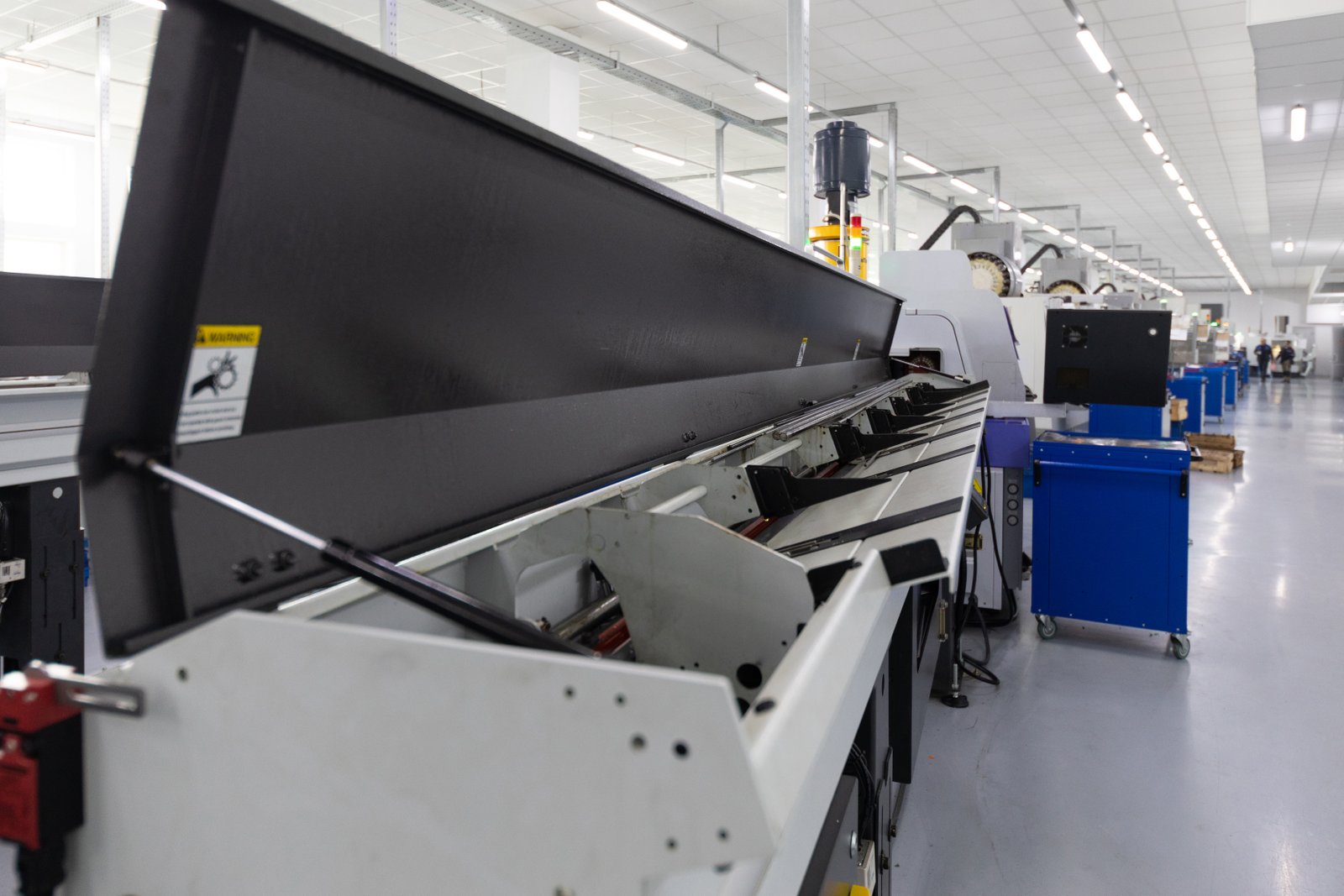
Customization and Modularity
One of the most effective solutions for optimizing machine performance across various pipe shapes is through a focus on customization and modularity in machine design. Rather than a one-size-fits-all approach, leading manufacturers like MZBNL4 offer tailored solutions where machines can be configured or upgraded with specific modules to enhance their multi-shape cutting capabilities. This might involve choosing from a range of chucking systems designed for different types of profiles (e.g., dedicated square tube chucks that can be quickly swapped, or universal adaptive chucks with a wider gripping range), or selecting specialized feeding systems optimized for particularly long or heavy non-circular tubes. The key is to match the machine's capabilities precisely to the client's diverse production demands.
For a client like Ahmed Al-Farsi, whose business expands into architectural metalwork and vehicle parts, the ability to obtain a "Laser Tube Cutting Machine with automatic feeding and punching capabilities" and "customization and post-sales training/support" is paramount. A modular approach means that his machine can be initially configured for his primary needs (e.g., round and square tubes for railings), but then easily upgraded later with additional modules or software features to handle more complex or irregular shapes, such as oval tubes for specialized vehicle components, without requiring a completely new machine. This scalability protects the initial investment and ensures long-term adaptability.
Furthermore, customization extends to software. Optimizing for various pipe shapes often involves bespoke programming or algorithm adjustments that can fine-tune cutting parameters for unique materials or demanding tolerances specific to a client's niche products. For instance, if a client frequently processes thick-walled rectangular tubes of a specific alloy, the machine manufacturer can provide pre-optimized cutting recipes that minimize heat distortion and maximize edge quality. This level of tailored optimization, combining hardware modularity with software flexibility, ensures that the machine is not just capable of cutting different shapes, but excels at it, delivering peak performance for every profile and contributing significantly to higher overall productivity and product quality.
Kapsamlı Operatör Eğitimi ve Beceri Geliştirme
Even with the most advanced machines, human expertise remains a critical factor in optimizing performance for various pipe shapes. Therefore, comprehensive operator training and ongoing skill development are indispensable solutions. While innovations like MZBNL's No-CAD Sistemi5 significantly reduce the learning curve, ensuring operators fully understand the machine's capabilities, troubleshooting procedures, and best practices for different geometries maximizes its potential. This goes beyond basic operational training to encompass an understanding of material science, cutting dynamics for various profiles, and efficient workflow management when switching between shapes.
For Ahmed Al-Farsi, who faced "high operator turnover caused retraining burdens," the emphasis on simplified, effective training is particularly relevant. MZBNL's promise of "operators now only need 1 day of on-site training instead of spending 15 days at the equipment factory" directly addresses this pain point. This streamlined training focuses on practical, hands-on application of the No-CAD system and understanding how to input parameters for different pipe shapes quickly and accurately. Such efficient training empowers operators to confidently manage diverse production runs, reducing setup errors and maximizing uptime.
Beyond initial training, continuous skill development through refreshers, advanced workshops, and access to a knowledge base ensures that operators stay updated with new features and optimize their techniques. This might include training on advanced nesting strategies for multi-shape projects, or how to utilize remote diagnostics and troubleshooting tools. By investing in their workforce, businesses ensure that their cutting-edge machines are always operated at their peak efficiency, leading to faster job completion, less material waste, and consistently high-quality output across all pipe shapes. This holistic approach to skill development transforms operators from mere machine users into integral parts of the optimization process, directly contributing to the business's profitability and competitive edge.
Predictive Maintenance and Remote Diagnostics
To truly optimize machine performance for various pipe shapes, implementing a robust predictive maintenance strategy coupled with advanced remote diagnostics is crucial. Cutting diverse geometries often places varying stresses on machine components. For example, cutting a thick-walled square tube might wear down certain parts differently than cutting a thin-walled round tube. Without proactive maintenance, these variations can lead to unexpected breakdowns, significantly impacting production schedules and overall efficiency, especially for businesses with tight deadlines like Ahmed Al-Farsi's.
Predictive maintenance utilizes sensors and data analytics to monitor the health of machine components in real-time. It can detect subtle changes in vibration, temperature, motor current, or cutting head performance, signaling potential issues before they escalate into major failures. For a machine handling multiple pipe shapes, this means the system can identify if specific operations (e.g., cutting complex profiles on rectangular tubes) are causing accelerated wear on particular parts, allowing for scheduled maintenance during planned downtime rather than reacting to an emergency breakdown. This dramatically reduces unscheduled downtime and extends the lifespan of critical components, ensuring consistent high performance across all pipe types.
Remote diagnostics further enhance this optimization by allowing manufacturers or service technicians to access machine data remotely. If an operator encounters an issue while switching to a new pipe shape, a support team can often diagnose and even resolve the problem without an on-site visit. This capability is invaluable for international clients like Ahmed in the UAE, who values "after-sales service and training support" and "remote diagnostics." It ensures quick resolution of technical issues, minimizes disruption to production, and guarantees that the machine remains operating at its peak efficiency for every pipe shape, regardless of geographical distance. This blend of proactive maintenance and rapid remote support transforms potential bottlenecks into continuous productivity.
Modular machines adapt to various pipe shapesDoğru
Modular designs allow quick swapping of components like chucks and feeding systems to handle different profiles efficiently.
Operator training takes 15 days minimumYanlış
Modern systems like No-CAD can reduce operator training to just 1 day through streamlined interfaces and focused instruction.
What best practices should operators follow when using machines for multiple pipe shapes?
Do you want to master your machine's versatility and ensure peak performance across all pipe shapes? Adhering to specific best practices is crucial for maximizing efficiency and maintaining precision. Empower yourself and your production.
Operators should follow best practices including thorough pre-production planning, utilizing smart software features, regular calibration and maintenance tailored to different shapes, precise material handling, and continuous learning to optimize machine performance for diverse pipe shapes and ensure consistent quality.
From my perspective as a machine builder, I know that even the most advanced equipment is only as good as the operators who run it. While MZBNL’s innovations like the No-CAD Sistemi6 make our machines incredibly user-friendly, mastering multi-shape cutting requires more than just basic operation; it demands a disciplined approach to workflow and an understanding of nuanced best practices. It's about turning powerful technology into consistent, high-quality output, especially for clients like Ahmed Al-Farsi who rely on delivering finished parts with precision. Let's delve into the essential habits and procedures that will elevate your machine's performance across every single pipe shape you process.
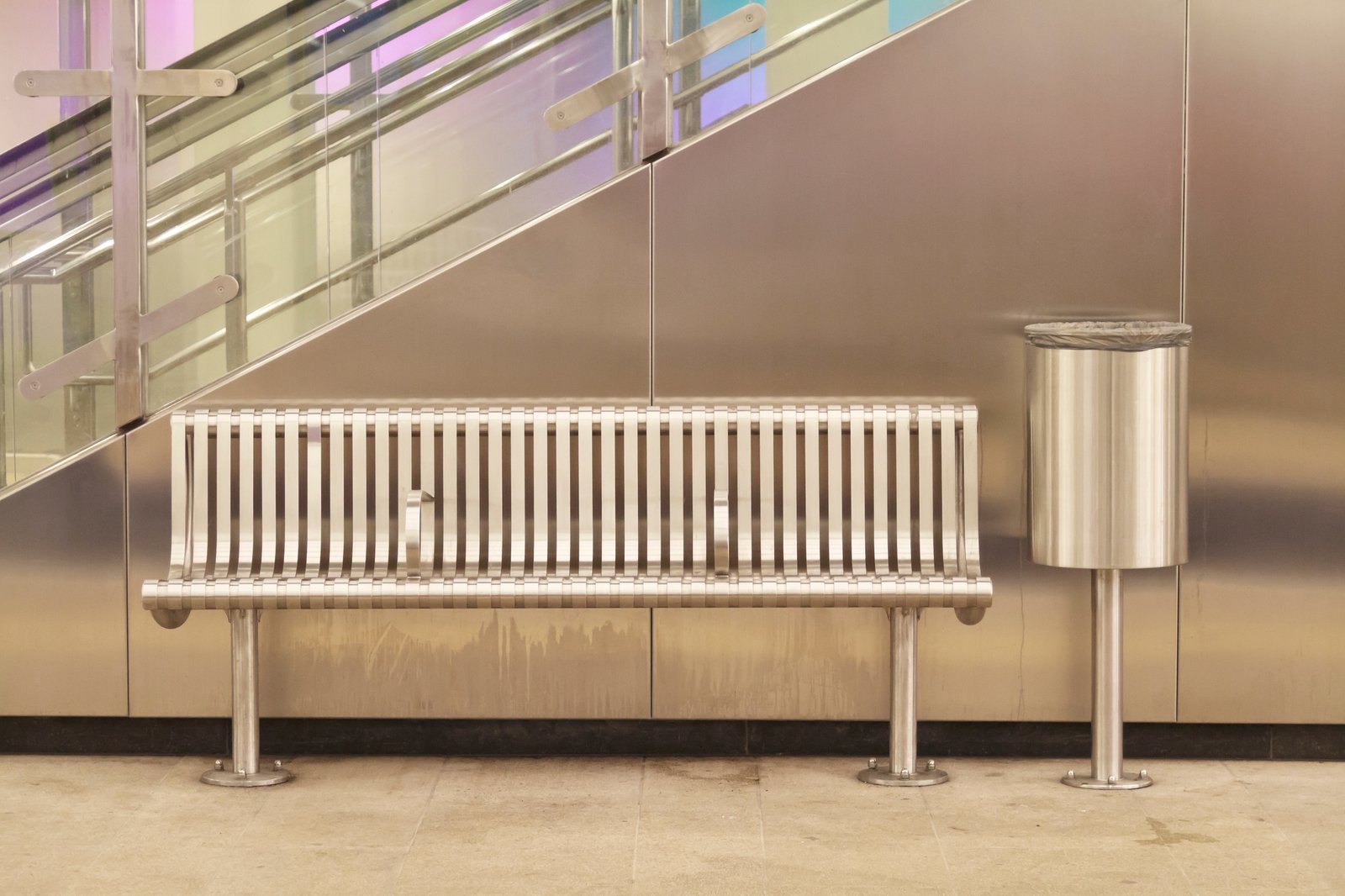
Thorough Pre-production Planning and Material Preparation
One of the most crucial best practices for operators using machines for multiple pipe shapes is thorough pre-production planning and meticulous material preparation. Before initiating any cutting operation, especially when transitioning between different pipe geometries, operators must meticulously review the job specifications. This includes verifying the exact dimensions of each pipe shape (e.g., outer diameter and wall thickness for round, side lengths and wall thickness for square/rectangular), the material type, and the required cut patterns. This initial review helps identify any potential discrepancies or challenges before they impact the cutting process, reducing costly errors and material waste.
Furthermore, planning should involve optimizing material utilization, particularly for long tubes that will yield multiple parts of varying shapes. Operators should leverage the machine's nesting capabilities to efficiently arrange multiple part designs (even for different shapes) on a single tube, minimizing scrap material. MZBNL’s Sıfır Atık Kuyruk Malzemesi İnovasyonu7 is a significant aid here, as it allows for cutting logic to be calculated from the rear chuck, virtually eliminating leftover tail material. Operators should be trained to utilize this feature to its fullest potential, ensuring that every inch of expensive material is accounted for. For instance, when Ahmed’s team produces a batch of square tubes for architectural railings and then switches to round tubes for vehicle parts, careful nesting can integrate both into a continuous workflow with minimal waste.
Material preparation is equally vital. This includes ensuring that tubes are clean, free from rust, debris, or excessive lubricants that could interfere with the laser cutting process or damage the optics. Tubes should also be straight and within specified tolerances to avoid feeding issues or inaccurate cuts, especially with non-circular profiles that are more prone to deformation during handling. Proper material handling, including careful loading onto the machine, prevents damage to the tubes or misalignment, which can be particularly challenging when dealing with heavy or long, irregularly shaped pipes. A few minutes spent in thorough planning and preparation can save hours of rework and significant material costs, ensuring the machine performs optimally for every pipe shape.
Regular Calibration and Preventive Maintenance
For machines handling multiple pipe shapes, regular calibration and proactive preventive maintenance are non-negotiable best practices. Different pipe geometries can introduce varying stresses and wear patterns on machine components. For example, the clamping jaws might experience different pressures when securing a thin-walled rectangular tube versus a robust round pipe. Consistent, high-precision cutting across all shapes demands that the machine's axes, chucks, and laser head remain perfectly calibrated. Operators should conduct daily or weekly checks, as recommended by the manufacturer, to ensure that chucks are gripping correctly, laser alignment is precise, and all moving parts are operating smoothly without excessive play.
Preventive maintenance goes beyond simple checks; it involves scheduled lubrication of moving parts, cleaning of optical components, and timely replacement of wear-and-tear parts. This proactive approach prevents minor issues from escalating into major breakdowns, which are particularly disruptive when the machine needs to adapt to varied production demands. For a business that values "spare parts availability and remote diagnostics" like Ahmed's, adherence to the manufacturer's maintenance schedule ensures machine longevity and consistent performance. Neglecting maintenance can lead to reduced cutting quality, increased material waste, and extended downtime, severely impacting profitability when dealing with a diverse product portfolio.
Furthermore, operators should be trained to recognize the signs of potential issues specific to multi-shape cutting. For example, if a square tube cut shows consistent beveling on one side but not another, it might indicate a calibration issue with the chuck's gripping force or a misalignment in the cutting head that is exacerbated by the non-circular profile. By documenting these observations and communicating them promptly to maintenance teams, operators play a crucial role in maintaining optimal machine performance. Regular, shape-agnostic calibration and diligent preventive maintenance ensure that the machine delivers reliable, high-quality cuts for every pipe shape, maximizing uptime and the return on investment.
Leveraging Smart Features and Continuous Learning
To truly optimize performance when using machines for multiple pipe shapes, operators must fully leverage the machine's smart features and commit to continuous learning. Modern laser tube cutting machines, like those from MZBNL, come equipped with advanced digitalized systems, intuitive interfaces, and features designed to enhance versatility. Operators should familiarize themselves with every aspect of the No-CAD Operating System, understanding how to quickly input parameters for a vast array of standard and even custom pipe shapes, rather than resorting to manual workarounds or outdated methods. This includes exploring features like automatic nesting for mixed pipe shape batches and real-time process monitoring that can identify deviations instantly.
For instance, if the machine has adaptive cutting parameters that adjust laser power and speed based on real-time feedback of material thickness or internal stress, operators should know how to activate and monitor these functions. This ensures optimal cut quality and minimizes waste when transitioning from, say, a thin-walled round tube to a robust rectangular profile. The integrated "multi-process integration" capability, which allows for combined cutting and punching, also requires operators to understand the optimal sequences and parameters for different pipe shapes to achieve maximum efficiency and precision. By utilizing these smart capabilities, operators transform a versatile machine into an intelligently controlled production hub.
Finally, continuous learning is paramount. The field of metal fabrication technology is constantly evolving, with software updates, new functionalities, and improved best practices emerging regularly. Operators should actively participate in ongoing training provided by manufacturers, engage with online forums, and review updated documentation. For Ahmed, who is even considering becoming a regional distributor, staying at the forefront of technological understanding ensures that his team can always extract the maximum potential from his machines. By embracing new features, understanding advanced diagnostic messages, and adapting their workflows, operators can ensure that their machine consistently delivers high-quality, efficient output for every conceivable pipe shape, solidifying the business's competitive edge in the market.
Pre-production planning reduces wasteDoğru
Thorough planning and material preparation help optimize material utilization and minimize scrap, especially when cutting multiple pipe shapes.
Calibration is only needed annuallyYanlış
Regular calibration (daily/weekly) is essential when handling multiple pipe shapes to maintain precision and account for varying wear patterns.
Sonuç
A single metal tube cutting machine can indeed handle multiple pipe shapes through innovations like MZBNL's No-CAD system, adaptive chucks, and smart control. These advancements overcome traditional limitations, offering enhanced versatility, efficiency, and material utilization, ultimately empowering businesses like Ahmed's to thrive in diverse fabrication markets.
-
Discover benefits of production agility, like cost-saving and faster market response. ↩
-
Discover how front-feeding innovation boosts efficiency and reduces manual effort ↩
-
Learn about enhanced material handling and its impact on productivity ↩
-
Learn about tailored solutions for enhancing multi-shape cutting capabilities ↩
-
Understand how the No-CAD System simplifies training and operation for multiple pipe shapes ↩
-
Learn about this system's advantage in user-friendly machine operation ↩
-
Discover how this innovation reduces waste and improves material utilization ↩
Sorularınız mı var veya daha fazla bilgiye mi ihtiyacınız var?
Kişiselleştirilmiş yardım ve uzman tavsiyesi için bizimle iletişime geçin.
